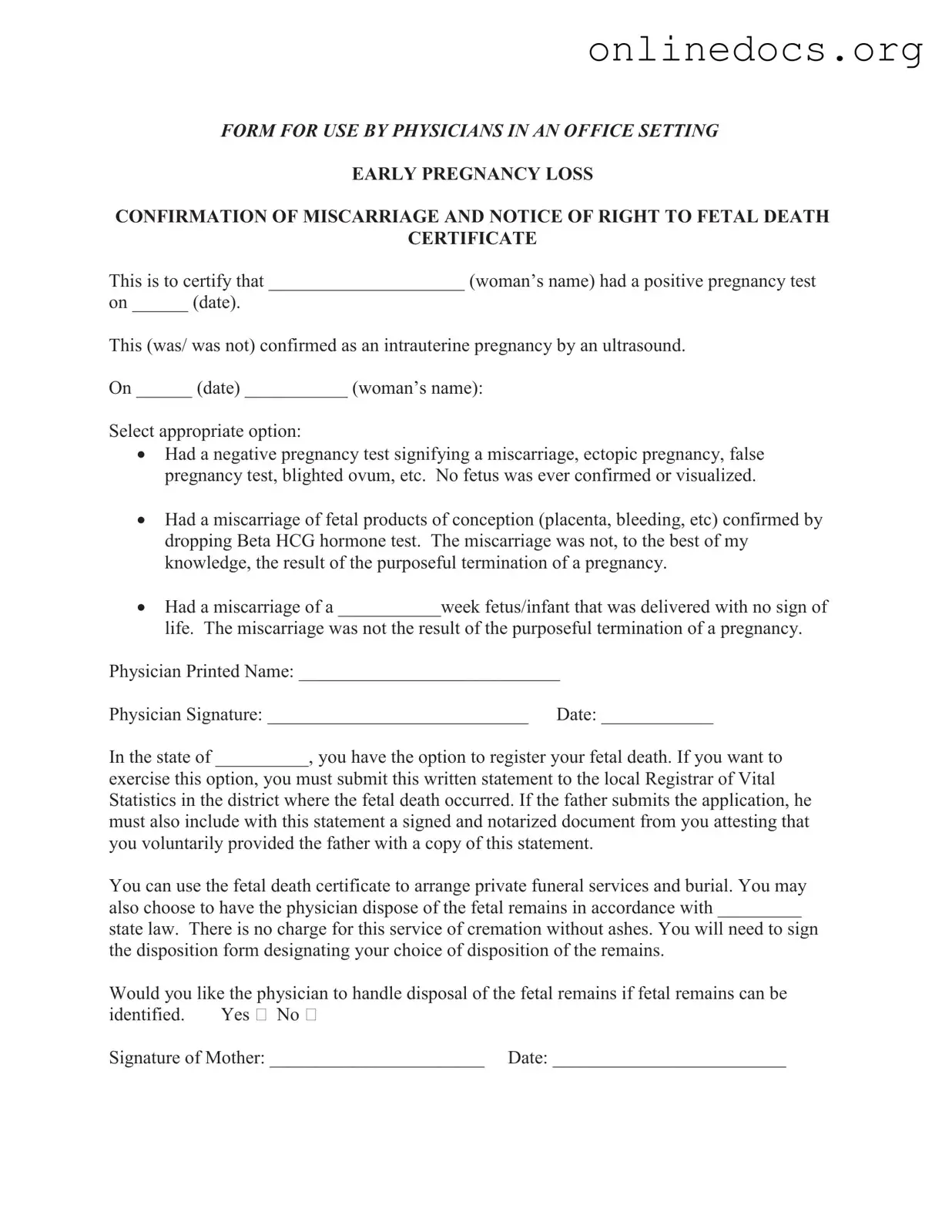The Miscarriage Discharge Paper form shares similarities with the Medical Certificate of Death. Both documents serve to officially recognize the end of a pregnancy or life. The Medical Certificate of Death provides essential details about the deceased, including the cause of death, which can be crucial for legal and administrative purposes. Similarly, the Miscarriage Discharge Paper outlines the circumstances surrounding the pregnancy loss, including confirmation of the miscarriage and the option for a fetal death certificate. Both documents require the signature of a physician to validate the information presented.
Another document akin to the Miscarriage Discharge Paper is the Fetal Death Certificate. This certificate is specifically designed to record the death of a fetus at any stage of gestation. It serves as a legal document that may be required for burial or cremation services. Like the Miscarriage Discharge Paper, it allows parents to acknowledge the loss of their child and provides them with the necessary paperwork to arrange for memorial services. Both documents emphasize the importance of recognizing the emotional and physical aspects of pregnancy loss.
The Birth Certificate, while typically associated with live births, is also similar in that it provides official recognition of a child's existence. In cases of stillbirth, parents may receive a stillbirth certificate, which acknowledges the birth of a child who did not survive. This document can be a vital part of a family's history, much like the Miscarriage Discharge Paper, which helps parents document their experiences and the loss they have endured.
When navigating the complexities of rental agreements, the https://californiapdfforms.com/residential-lease-agreement-form serves as a crucial resource for both landlords and tenants to ensure that all necessary terms are formally documented and respected throughout the leasing period.
The Death of a Child Notification form is another related document. This form is often used to inform various institutions, such as schools or insurance companies, about the death of a child. It serves to officially communicate the loss, allowing families to address any necessary administrative tasks. Similarly, the Miscarriage Discharge Paper provides a formal acknowledgment of the pregnancy loss, helping families navigate the emotional and logistical challenges that follow.
In addition, the Authorization for Disposition of Remains form bears resemblance to the Miscarriage Discharge Paper. This document allows parents to specify how they wish to handle the remains of their child, whether through burial or cremation. It provides a means for parents to make decisions during a difficult time, just as the Miscarriage Discharge Paper outlines options for the disposition of fetal remains, ensuring that families have control over their choices during this sensitive period.
The Prenatal Care Record can also be considered similar. This record documents the medical history and care provided during pregnancy. Although it focuses on the health and progress of the pregnancy, it may also include notes on complications or losses. The Miscarriage Discharge Paper serves as a formal conclusion to that care, providing a clear record of the outcome, which can be important for future medical considerations.
Lastly, the Medical Release Form for Pregnancy Loss is comparable. This document allows parents to authorize healthcare providers to share medical information related to the pregnancy loss with relevant parties. It ensures that families can access necessary support services and resources. Like the Miscarriage Discharge Paper, it recognizes the sensitive nature of pregnancy loss and aims to facilitate communication during a challenging time.
